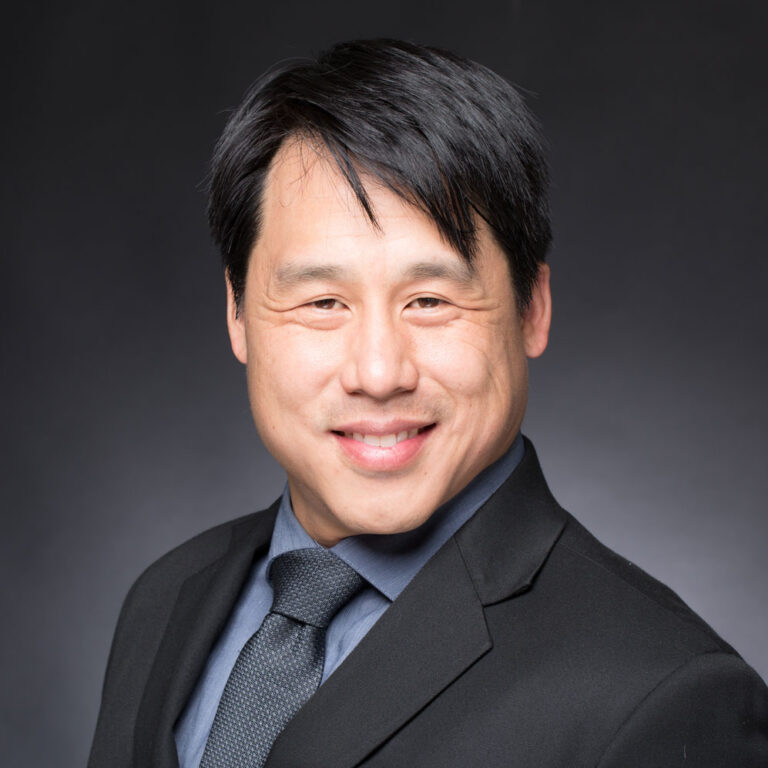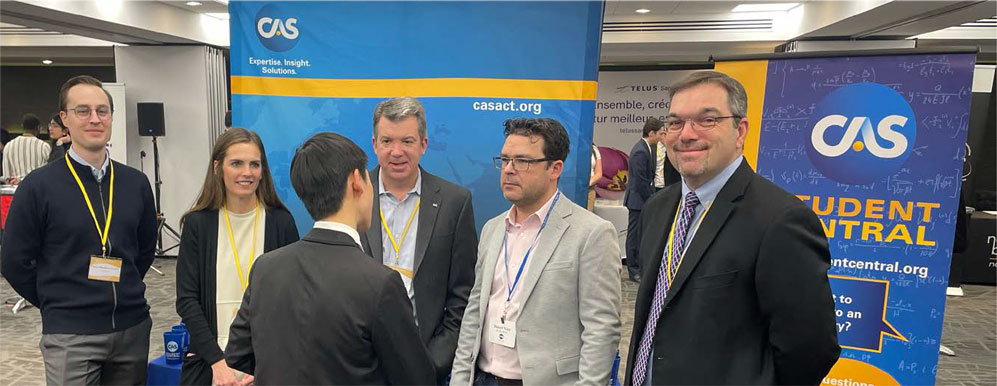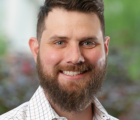
In my last President’s Message, I talked about collaboration as a key theme for this upcoming year, as well as a few priorities for the year. This month, I’d like to give you an update on meetings I attended within and outside of the CAS to strengthen collaboration and to learn about what’s happening more broadly across the actuarial profession.
Meeting the Executive Council
Every month, I meet with the CAS vice presidents, our CEO and his leadership team in the CAS Executive Council. Since I’m early in my term, I asked the team for “a Rose, a Bud, and a Thorn” (or a mini status report) to get to know a bit about the highlights, plans and concerns for each area. Here are some of the roses and buds shared from that exercise:
- Avraham Adler is now a co-editor for Variance.
- We launched our new University Recognition Program.
- The floating exam break went live in the fall exam sitting last year.
- The call for reserving papers garnered a strong response.
- The “Big 5” CAS Meetings collaboration, a focused effort to enhance our larger meetings and seminars with input from various CAS Office departments, has started. (The “Big 5” are Spring and Annual Meetings, RPM, Reinsurance and Reserves Seminars.)
- We held our second China Summit with 270 attendees, which was kicked off by a video from our President-Elect Dave Cummings.
In doing this exercise, my hope is that we’ll be able to increase awareness across the various areas in which our multitude of passionate volunteers (nearly 3,000) are working and to generate some cool cross-collaborations.
Meeting other actuarial organizations
Over the past few months, I’ve participated in a few bilateral meetings with other actuarial organizations like the Institute and Faculty of Actuaries and the Institute of Actuaries of India. These meetings are a great way to learn about issues facing actuaries more broadly, as well as find areas for collaboration. Topics from these conversations range from education and outreach to climate risk and the need to promote our profession. The impact of generative AI on our work and our exams, in particular for exams offered online, often comes up as well. These conversations help us learn how other leaders deal with our profession’s issues in their countries.
Meeting potential new members
I attended the Actuarial Students’ National Association (ASNA) Convention in Montréal with CAS staffers Mike Boa, Ken Williams and Margaret Gaddy, as well as several Canadian CAS member volunteers. The convention was for aspiring actuarial students from universities across all of Canada and was, amazingly, organized by a committee of students. This committee gathers sponsors, secures the hotel and venue, arranges for speakers and a case competition, handles meeting logistics including buses and transportation, and generally directs traffic for participants at the event. In total, over 700 students attended with over 40 sponsors. It was a good opportunity for us to meet the next generation of actuaries and get their perspectives.
The first day of the event was brimming with energy and featured a career fair that was punctuated by a professional panel discussion and some networking activities. All students were required to go through the exhibit hall and were encouraged to apply for jobs during one of the career fair sessions. Luckily, the CAS had a booth near the entrance to capture some of this energy! Even though we weren’t hiring, many students stopped by to chat and ask questions. We had great help from a few Canadian CAS Fellows: Daniel Viau, Simon Sidorenko and Martin Menard. In between career fair sessions, David Mamane, FCAS, FCIA, represented the CAS in a professional panel that discussed the actuarial career and answered student questions. Our collective goal was to ensure that attendees were aware of the P&C education, training and community that the CAS provides.

On the second day, we had more opportunities to present to the students directly. In the morning, former CAS Board Member Erika Schurr, FCAS, and Todd Orrett, FCAS, FCIA, gave a presentation about wildfires across Canada and the U.S. In the afternoon, CAS Staff Actuary Ken Williams covered marijuana legalization and auto risk. Both sessions addressed hot topics, and the presenters delivered interesting content — in one case, a run of puns elicited questions and laughter from the crowd. We were encouraged by the quality of the questions the students asked and their levels of engagement. We hope that the presentations showed just how interesting our field of work is. Between the sessions, I delivered a talk during lunch about redefining the actuary and how CAS members are being sought after as general risk problem solvers outside of traditional insurance.
We talked to attendees who ranged from near-graduates to first-year actuarial students. The following are a few insights from my conversations:
- The majority of attendees were actuarial science majors, but there were a few data science majors interested in actuarial science as a path to more technical roles in insurance.
- Questions were on point. One person actually asked me a follow-up question on the spherical wheels I mentioned in my keynote! These students have bright careers ahead of them.
- The support for the students was amazing. Many of the volunteers from P&C employers were still taking exams yet took time to talk to and give free career advice to students — many students likely had internships lined up by the end of the convention. The CIA also arranged to have a professional photographer take headshots for about 250 people. (See my headshot for this column.)
- Perhaps not surprisingly, branded swag is really popular with students.
A final take away
For the ASNA meeting, repeat attendees are the norm, and many students volunteer, sometimes early and often. For example, the ASNA president-elect is a sophomore. Despite drawing students from all over Canada and from different backgrounds, ASNA is a tight-knit community of young, aspiring people. It’s no wonder that many Canadians at CAS meetings seem as though they’ve known each other for a long time — perhaps they have.
Just like ASNA, we at the CAS also have a strong and aspiring community. I’ve known many of you for a long time, too. Although our membership has grown immensely, we still have that desire for connection that has sustained our organization for nearly 110 years. I want to keep this sense of community and make it even stronger.
Thanks for reading and I hope to see you at the CAS Spring Meeting in Atlanta!











